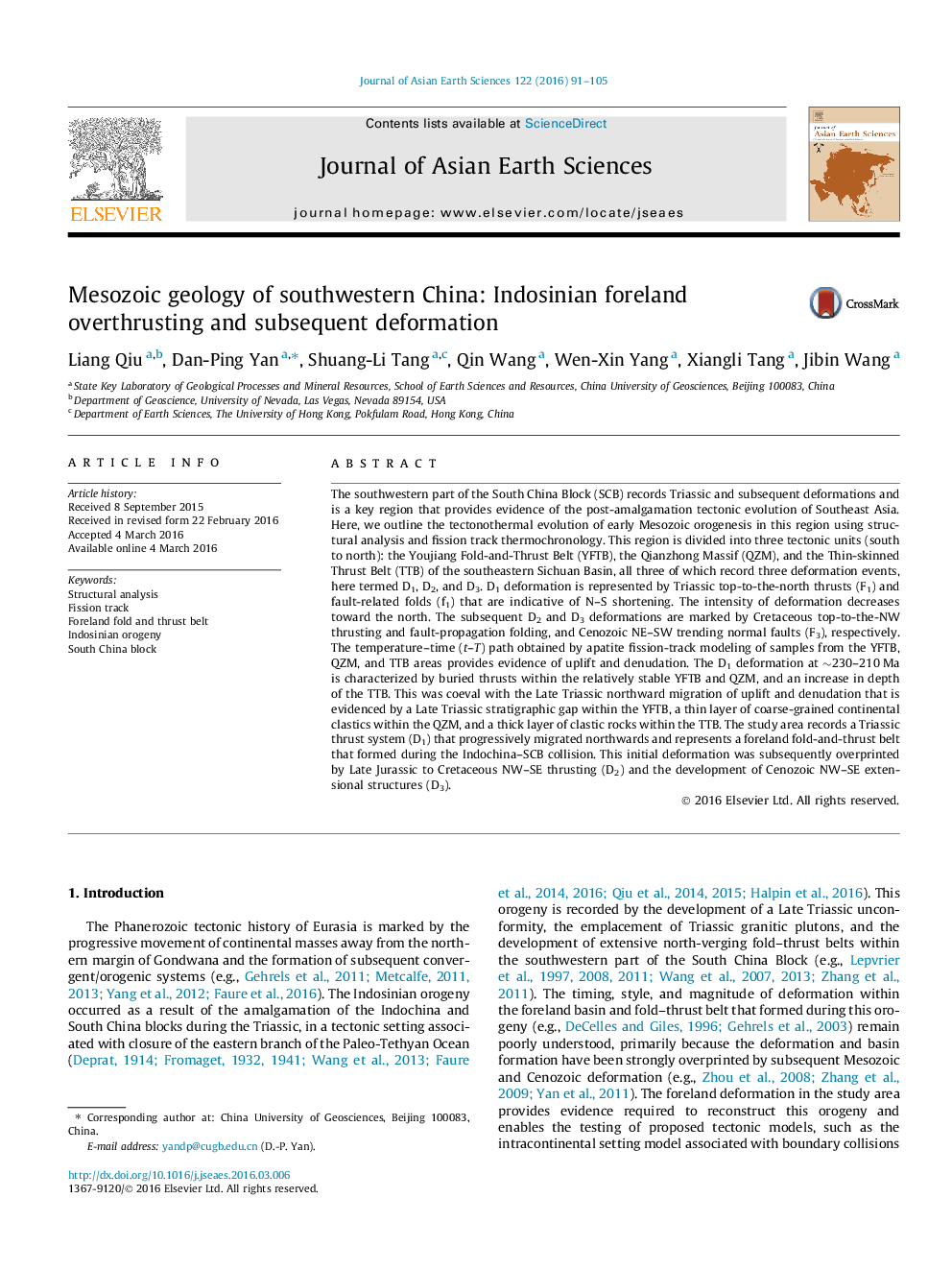| کد مقاله | کد نشریه | سال انتشار | مقاله انگلیسی | نسخه تمام متن |
|---|---|---|---|---|
| 4730057 | 1640349 | 2016 | 15 صفحه PDF | دانلود رایگان |
• Indosinian structural style and superpositions identified in southwest China.
• Fission-track data records burial and exhumation regarding deformations.
• A foreland fold-and-thrust belt of Indochina–SCB collision is reconstructed.
The southwestern part of the South China Block (SCB) records Triassic and subsequent deformations and is a key region that provides evidence of the post-amalgamation tectonic evolution of Southeast Asia. Here, we outline the tectonothermal evolution of early Mesozoic orogenesis in this region using structural analysis and fission track thermochronology. This region is divided into three tectonic units (south to north): the Youjiang Fold-and-Thrust Belt (YFTB), the Qianzhong Massif (QZM), and the Thin-skinned Thrust Belt (TTB) of the southeastern Sichuan Basin, all three of which record three deformation events, here termed D1, D2, and D3. D1 deformation is represented by Triassic top-to-the-north thrusts (F1) and fault-related folds (f1) that are indicative of N–S shortening. The intensity of deformation decreases toward the north. The subsequent D2 and D3 deformations are marked by Cretaceous top-to-the-NW thrusting and fault-propagation folding, and Cenozoic NE–SW trending normal faults (F3), respectively. The temperature–time (t–T) path obtained by apatite fission-track modeling of samples from the YFTB, QZM, and TTB areas provides evidence of uplift and denudation. The D1 deformation at ∼230–210 Ma is characterized by buried thrusts within the relatively stable YFTB and QZM, and an increase in depth of the TTB. This was coeval with the Late Triassic northward migration of uplift and denudation that is evidenced by a Late Triassic stratigraphic gap within the YFTB, a thin layer of coarse-grained continental clastics within the QZM, and a thick layer of clastic rocks within the TTB. The study area records a Triassic thrust system (D1) that progressively migrated northwards and represents a foreland fold-and-thrust belt that formed during the Indochina–SCB collision. This initial deformation was subsequently overprinted by Late Jurassic to Cretaceous NW–SE thrusting (D2) and the development of Cenozoic NW–SE extensional structures (D3).
Journal: Journal of Asian Earth Sciences - Volume 122, 15 May 2016, Pages 91–105
